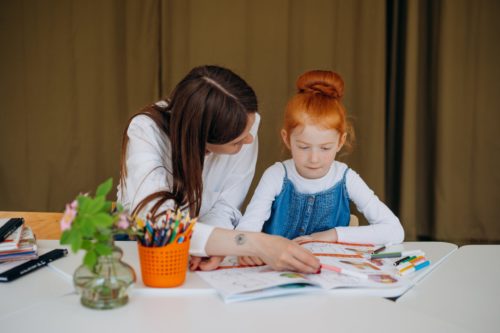As research has shown that phonics skills are critical to mastering reading (read more on that in our last blog), finding an effective and systematic approach to support our young readers during their learning journey has become more important than ever. And while learning to read may come natural to some, others might just need a little extra help in order to get them to that “aha!” moment. So, what is a good way to offer both types of learners the kind of practice and support they need to be successful? This is where decodable books come into play.
What exactly is a decodable book?
Decodable books are texts written with a specific phonetic pattern throughout the whole text. The phonetic patterns used are by default ones that the students have already learned.
For example, a student who has learned the short vowel sounds will see words such “tin, cat, let” in a decodable text, which they will be able decode–or sound out. What they will not be see in that same decodable text are more complex words and patterns that they have not yet learned and will not be able to decode, such as “coat, knit”.
Why choose decodables books?
Now let’s talk about why experts and teachers alike agree that decodables can be hugely beneficial to learners. First and foremost, decodables offer an effective and systematic targeted practice that allows students to master their newly learned phonics skills. As phonics patterns are often learned in isolation in classrooms, decodable readers let learners apply their knowledge to reading an actual book, and in turn consolidates their newly acquired skills.
Decodable books are also an excellent way to keep young readers feeling motivated during their learning journey and cultivate good reading habits. When reading a non-decodable book at a young age, learners can feel discouraged and frustrated with the complex words present in the text, and are thus likely to resort to guessing at the words–which is a poor reading strategy that we want to steer them away from.
Decodable readers, in comparison, encourage students to use their phonic skills to decode the unfamiliar words in the text, and in turn facilitate independent reading. This boosts the students’ confidence significantly and makes them feel empowered.
What makes for a good decodable reader?
Good decodable readers can be found right here on our site! Here at Phunics, we have worked hard to create and provide fun decodable stories that engage the readers and help them advance in their reading levels. Here are the features that make our decodables unique:
1)Entertaining stories with themed characters
Decodable books often have a reputation of being “boring” because of the limited word list. Not with Phunics! All of our decodable stories are written with engaging story lines that “make sense”–learners will feel like they are reading an actual (and fun) book, not doing some phonics practice. Stories from the same level also have the reoccurring and relatable characters to further engage the readers.
2) Engaging illustrations
Illustrations can be a powerful tool to keep young readers engaged while reading. Each of our text is paired with beautiful illustrations aimed at capturing the reader’s interest, but without giving too much information away–we have found just the right balance in which readers are more interested in the story thanks to the artwork and are motivated to read on, but there is not enough visual clues to allow them to guess at the words.
3) Clear targeted learning goals
There are no doubts about what the learning target of each story is; the phonetic pattern at the center of each story is presented in the beginning and emphasized throughout the whole text, with each word being highlighted and accompanied by audio.
4) Progressive
Just as all good decodables should be, our readers are progressive. As students acquire more advanced phonics knowledge, more complex words will appear to reflect this. Our ultra-comprehensive set of 200+ readers have been carefully leveled and gradually increase in complexity as students advance through the levels, making sure that are no jumps in difficulty and no learning gaps.
Discover the power of decodable stories today–check out our FREE sample stories to find your appropriate level. Happy reading!
